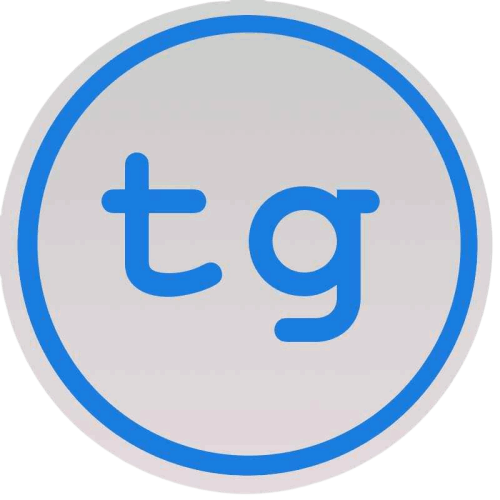The Ultimate Guide to Creating a Social Media Content Strategy in 2025
As of February 2025, a stunning 5.24 billion people, nearly 64% of the global population, are active on social media. That’s not just reach. That’s eventuality.
Yet, in this golden age of digital connectivity, numerous brands are still stuck in “ survival mode ” — posting just to post, chasing viral trends without direction, and wasting time on platforms that don’t yield results. For growing businesses and stretched marketing brigades, the dereliction approach frequently becomes “ Just get the commodity out there.”
But here’s the truth: showing up isn’t enough anymore.
You need a sharp, scalable, and data-backed content strategy that cuts through the noise and drives real impact.
What is a social media content strategy?
A social media content strategy is your roadmap for planning, creating, distributing, and optimizing content across platforms to meet specific business pretensions. It aligns the IAR with analytics, creativity with clarity, and trends with measurable issues.
From understanding your followership to competitive benchmarking and content creation, let’s break down the essential ways to help you make a high-performing social strategy.
Step 1: Set SMART, Traceable goals
Any successful content strategy begins with crystal-clear goals. These guide your content creation and help you measure results effectively.
Use the SMART framework:
- Specific: Define the outcome clearly.
→ e.g., “Increase Instagram engagement rate by 10%”
- Measurable: Use tangible metrics like likes, shares, CTR, or video views.
- Achievable: Set realistic targets based on past performance.
- Relevant: Align with business objectives (e.g., drive traffic, boost sign-ups).
- Time-bound: Set a clear timeframe (e.g., “in 90 days”).
Example SMART goals:
- “Generate 500 clicks to our website from Instagram Stories within 60 days.”
- “Achieve a 5% engagement rate on Facebook posts by the end of Q1.”
- “Grow TikTok followers by 15% in 90 days.”
Pro Tip: Use tools to track performance, benchmark against competitors, and visualize trends over time.
Additionally, use AI for content marketing can help you predict the success of your goals by analyzing data patterns and audience behavior for better precision.
Step 2: Understand your audience inside out
Guesswork kills strategy. To create impactful content, you must understand:
team Demographics
- Age
- Gen Z: TikTok, Instagram Reels, memes, trends.
- Millennials: Infographics, carousels, X (formerly Twitter), Instagram.
- Gen X & Boomers: Long-form, practical content on Facebook and LinkedIn.
- Gender & Identity
- Tailor tone and visuals based on your audience’s interests and values.
- Location
- Helps with language, cultural relevance, and optimal posting times.
Team pain points & behavior
Identify your audience:
- Challenges and unmet needs
- Content consumption patterns
- Preferred platforms and content formats
Use audience insights tools to find:
- Top-performing content
- Engagement times
- Interests and job titles (especially via LinkedIn insights)
Step 3: Choose the right platforms for your objectives
Each platform has its own strengths. Instead of being everywhere, be strategic.
Match Platforms to Goals:
- Instagram → Visual storytelling, UGC, product showcases, Reels for reach.
- Facebook → Community building, event promotion, detailed storytelling.
- LinkedIn → B2B networking, thought leadership, industry insights.
- TikTok → Gen Z attention, trends, tutorials, behind-the-scenes content.
- X (Twitter) → News updates, engagement via polls and conversations.
Know Where Your Audience Is
- Gen Z → TikTok, Instagram
- Millennials → Instagram, LinkedIn
- Gen X & Boomers → Facebook, LinkedIn
Apply the 50/30/20 Rule:
- 50% → Primary platform (biggest audience or ROI)
- 30% → Secondary platform (growing traction)
- 20% → Experimental (emerging platforms)
Step 4: Analyze your competition
To win the game, you need to know who you’re playing against.
Competitive Analysis Checklist:
- Content Types: Are they using more videos, memes, carousels, or stories?
- Engagement Metrics: Which posts get the most comments, shares, and saves?
- Posting Frequency & Timing: What are their best times to post on social media?
- Platform Usage: Where are they thriving—and where are they absent?
Pro Tip: Use tools like Sprinklr Social to benchmark competitors’ performance and reverse-engineer their successful strategies.
Step 5: Research benchmarks & best practices
Knowing industry benchmarks helps you set realistic expectations and improve content effectiveness.
Examples:
- On Facebook, photo albums generate the highest engagement.
- On Instagram, carousels outperform single-image posts for engagement.
- On TikTok, shorter videos (under 30 seconds) tend to go viral more easily.
Benchmarking tools also reveal:
- Average engagement rates by industry
- Post type performance
- Posting frequency standards
Step 6: Audit your current content
Evaluate your existing content to identify:
- Top-performing formats (video, carousels, infographics, etc.)
- Best posting times
- Content themes that resonate most
Then ask:
- Which posts are aligned with current goals?
- What should you do more or less of?
- Are there gaps in your content coverage?
Make decisions based on performance data, not personal preference.
Examples of content that converts on social media
1. Infographics
- Educate, simplify, and engage quickly.
- Example: HubSpot’s infographics on marketing stats and strategies.
2. Video Series
- Tutorials, product demos, and case studies build trust.
- Example: Shopify Academy videos support and educate e-commerce brands.
3. Quizzes & Polls
- Interactive and feedback-friendly.
- Example: Ahrefs polls on X gather user feedback and boost interaction.
4. User-Generated Content (UGC)
- Builds authenticity, trust, and engagement.
- Example: Bizzabo leverages real customer testimonials in campaigns.
5. Educational Series
- Offer consistent value through tutorials, guides, and insights.
- Example: Semrush’s SEO and marketing education posts.
6. Behind-the-Scenes Content
- Show the human side of your brand.
- Example: Mailchimp shares team stories and culture highlights.
7. Influencer Collaborations
- Expand reach and add credibility.
- Example: Canva partners with lifestyle and small biz influencers on Instagram.
Final thoughts
In 2025, showing up randomly on social media is no longer enough. If you want your brand to break through the clutter and generate real business results, you need a social media content strategy that’s sharp, scalable, and rooted in real data.
Ready to grow your social media presence with purpose?
Start by aligning your strategy with these proven steps and tools—and transform your brand into a consistent, compelling, and conversion-focused voice across social channels.





